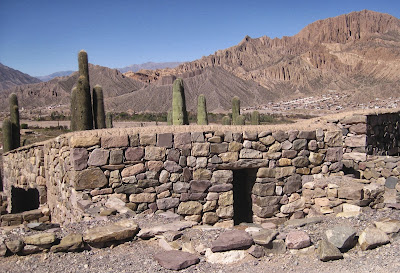We're backtracking a little bit with this post, but we wanted to share some photos from the National Immigrant Festival that we went to in Obera, Misiones Province before we went to see the waterfalls in Puerto Iguazu.

Every year, the city of Obera puts business-as-usual on hold for 10 days, and celebrates this festival in honor of their immigrant-stock heritage. On the first night, we watched the opening ceremonies, in which groups of dancers represent each of the different ethnic communities whose heritage organizations participate in the festival each year. Lily was quick to point out that the group of 'Arab' heritage was represented by the flag of the United Arab Emirates - a curious choice for a community with historical roots predominantly in Syria and Lebanon... But that's why we were at the festival to begin with - to see where the divorce between the historical record and modern day expressions manifests itself... We quickly learned that not everyone participating in the activities of a particular heritage group actually has roots in that culture. Take for example the owner of the cabin we stayed in: We ran into dressed in full 19th century-Portuguese garb, but she quickly pointed out that she was actually German, but had just 'fallen in with the Portuguese crowd' ('me he enganchado con los Portugueses, viste?').

The setting for the festivities is the Parque de las Naciones - and we had no idea that the festival grounds would be as elaborate as they were. About a dozen different immigrant nationalities each had a 'house' that represented their group. At each house there was a restaurant where you could order 'typical' food from that heritage region. Many houses also included kiosks where you could buy 'ethnic' crafts or trinkets, and stages where they held small-scale musical and dance performances throughout the week. The immigrant nationalities with representative houses included: Spain, Portugal, Italy, Russia, Germany, Switzerland, 'Scandinavia', Brazil, Paraguay, Japan, 'Arabia', Poland, Ukraine, Czech Republic, and, of course..... Argentina (THE BIGGEST HOUSE.). Oh, and the Guarani were also represented. Not that they were 'immigrants' per se... quite the contrary... details, details. We didn't get photos of all of the houses, but here is a smattering:

The German House (with abundant lederhosen).
The Polish House (with beautiful woodwork).
The Ukrainian House (with lots of live accordion). Notice the blessed beer garden to the left, where we sampled both mint- and yerba mate-infused microbrews. The bitterness of the yerba stood in surprisingly well for hops..
The Swiss House.
Lily hanging out in the sands of the Arab House... which actually sprawled into more of an Arab Compound area, with adjacent lounge-tent, souvenir kiosk, and camel/pyramids photo-op stations.
Arab snack and souvenir kiosk. Note the excellent font in the word 'kiosco'...
Also on the fairgrounds is a small museum that includes exhibits on a variety of themes. There is a ceramic art exhibit, as well as a natural history exhibit full of taxidermied specimens from the region, as well as indigenous artifacts, and replicas of tools used in early 20th century cultivation of yerba mate: Overall, a pretty agreeable hodge-podge of interesting things to contemplate.
Also on site was an incredible live orchid exhibit, but we've saved that for a separate post..
So... stay tuned for posts on said orchid exhibit, and Ben's First Asado!

















































